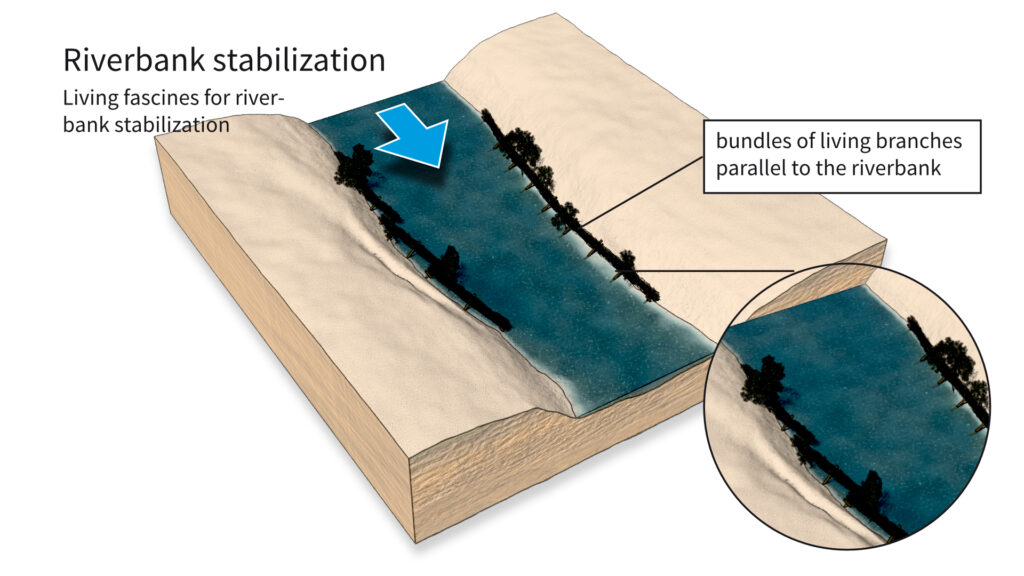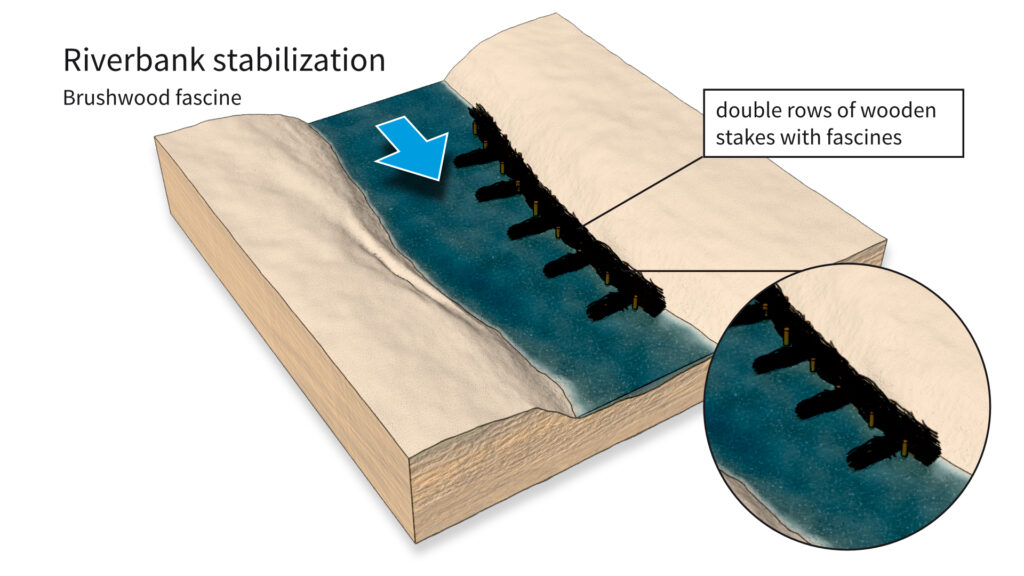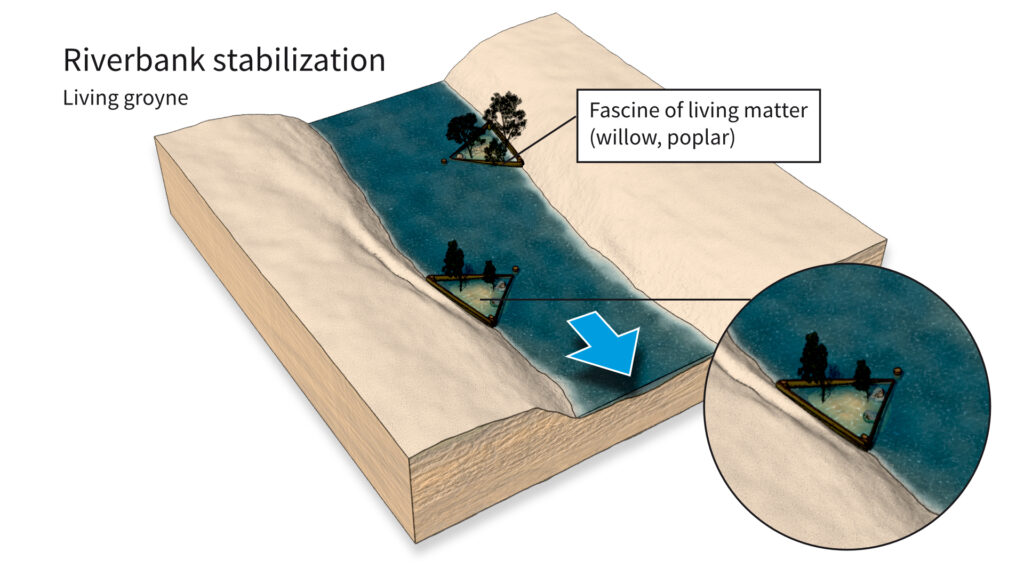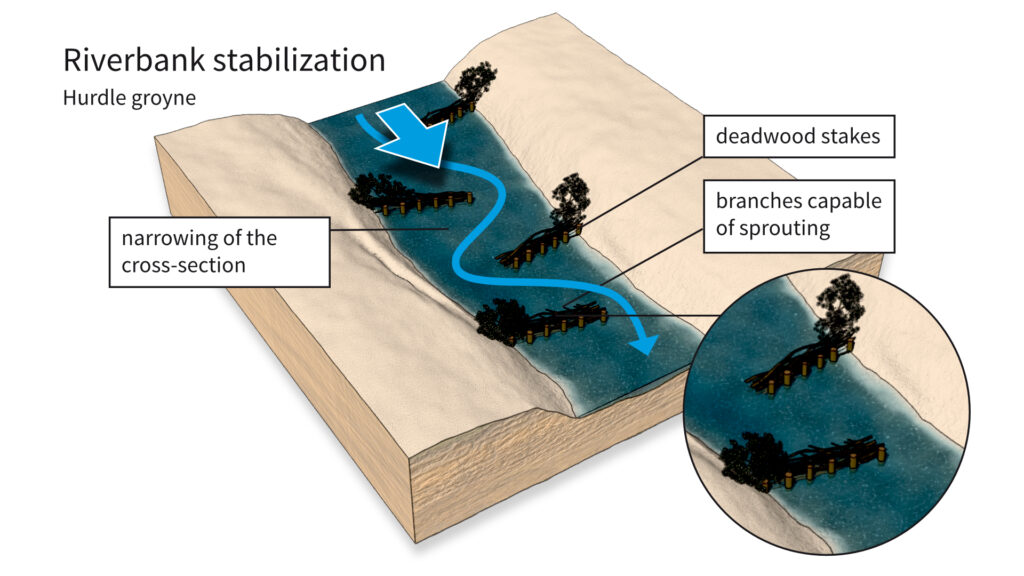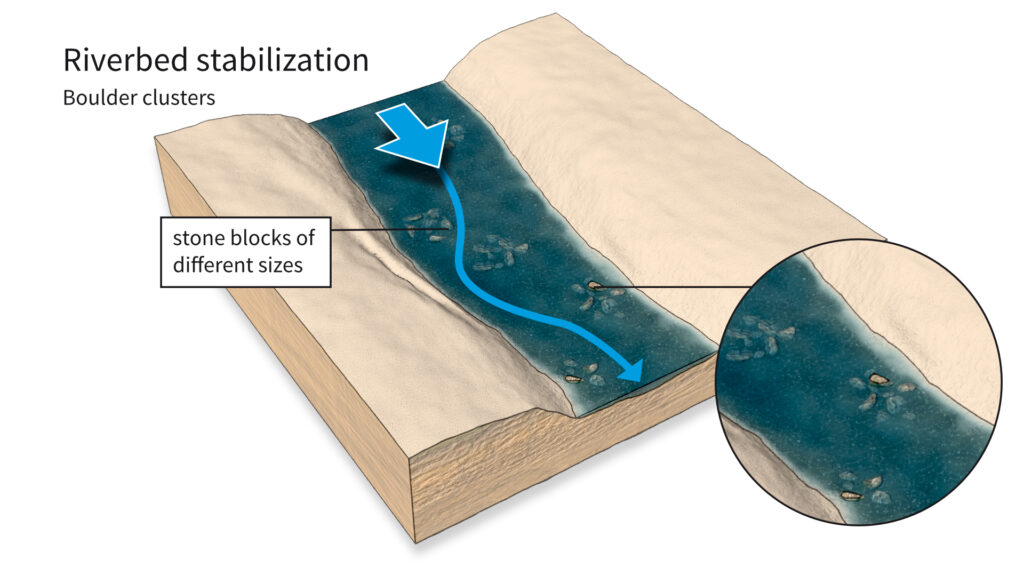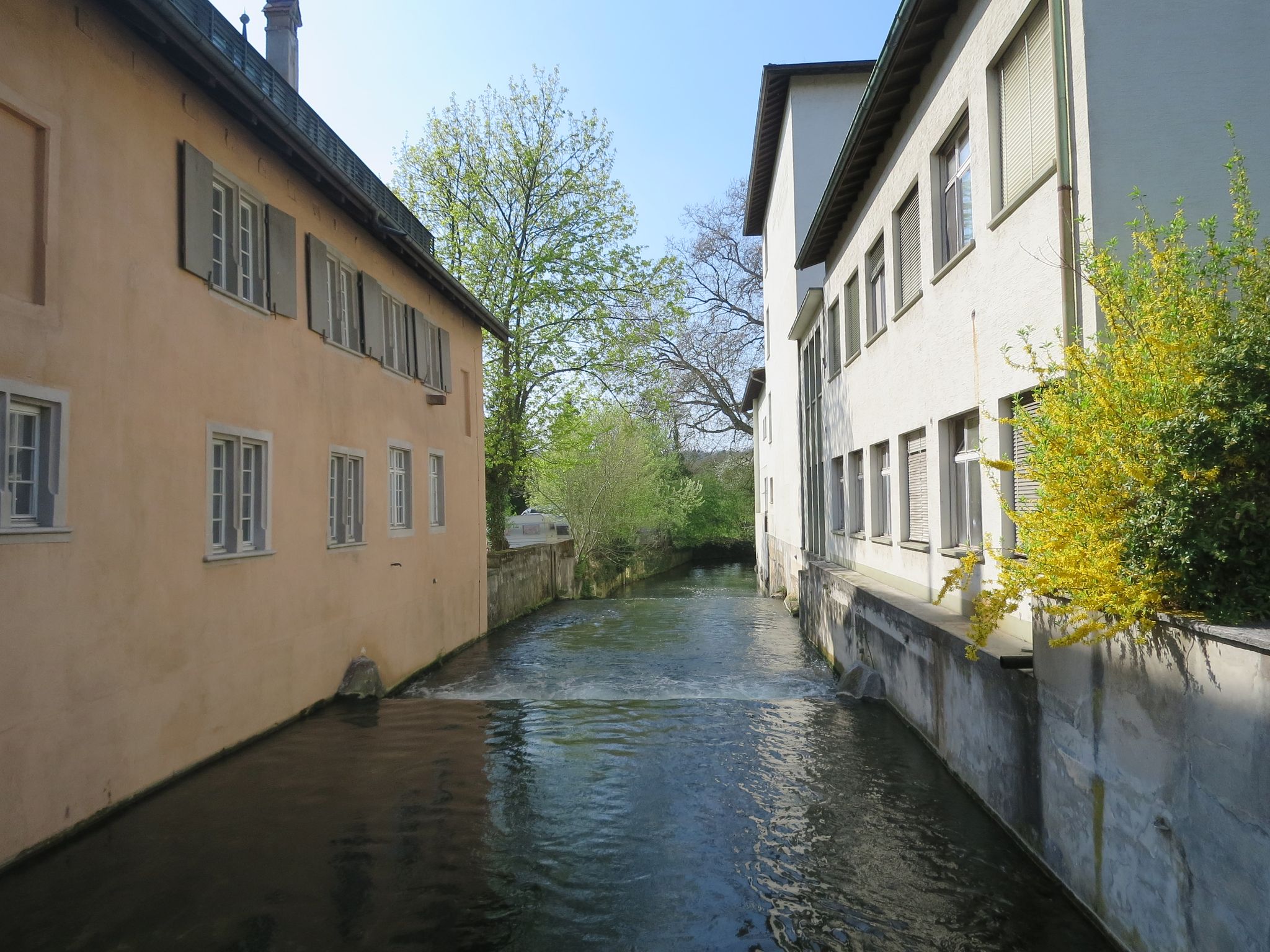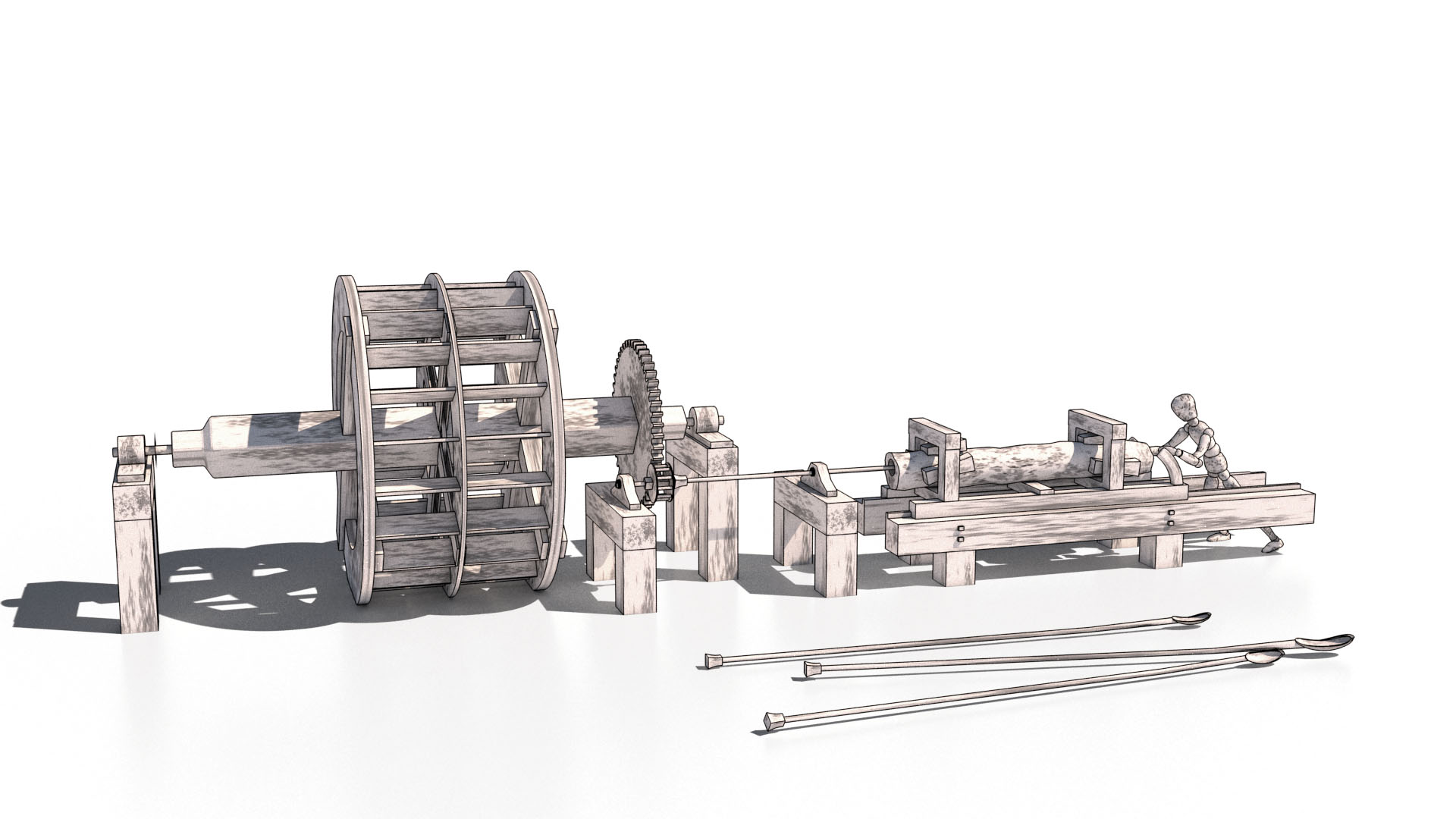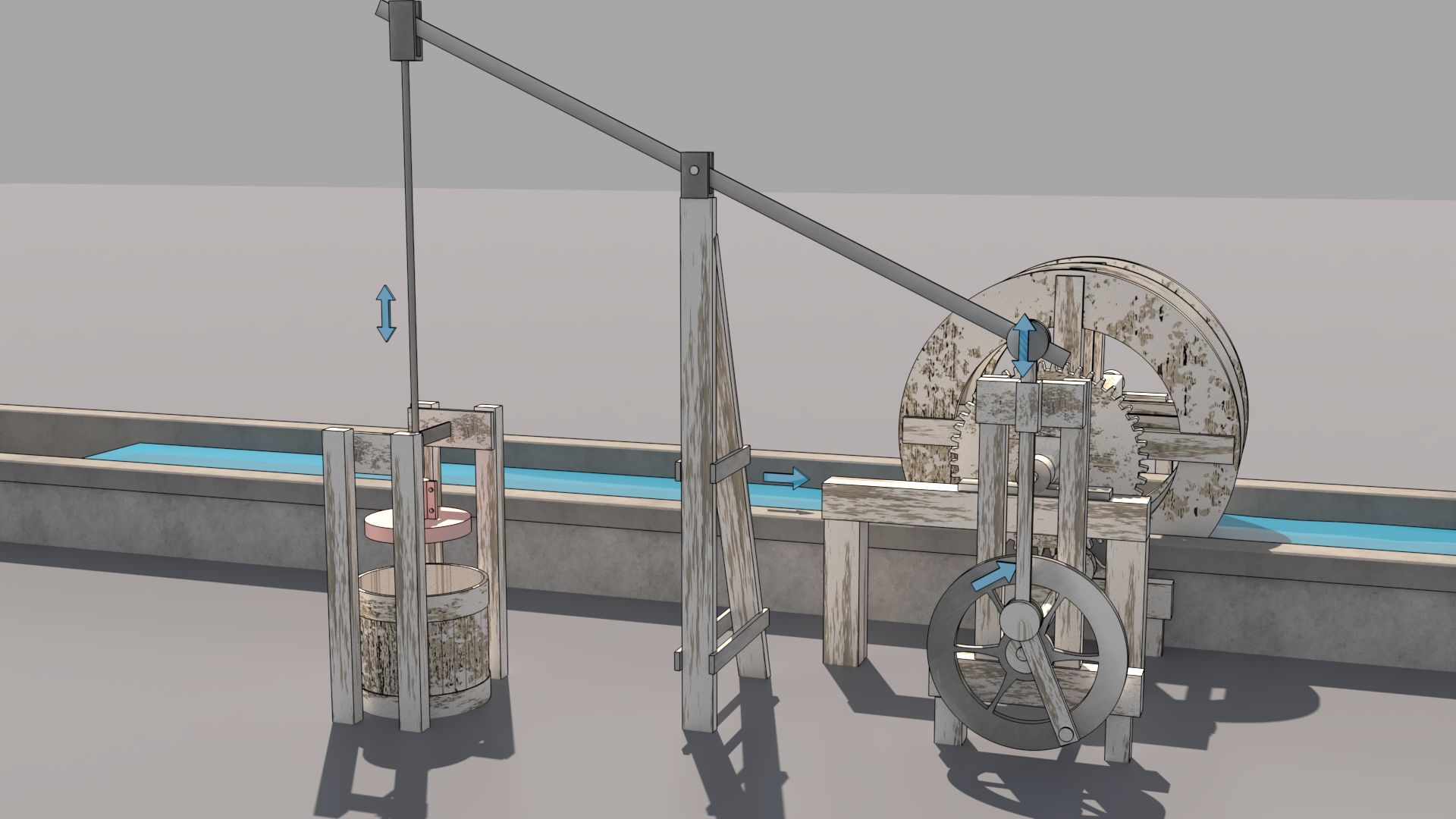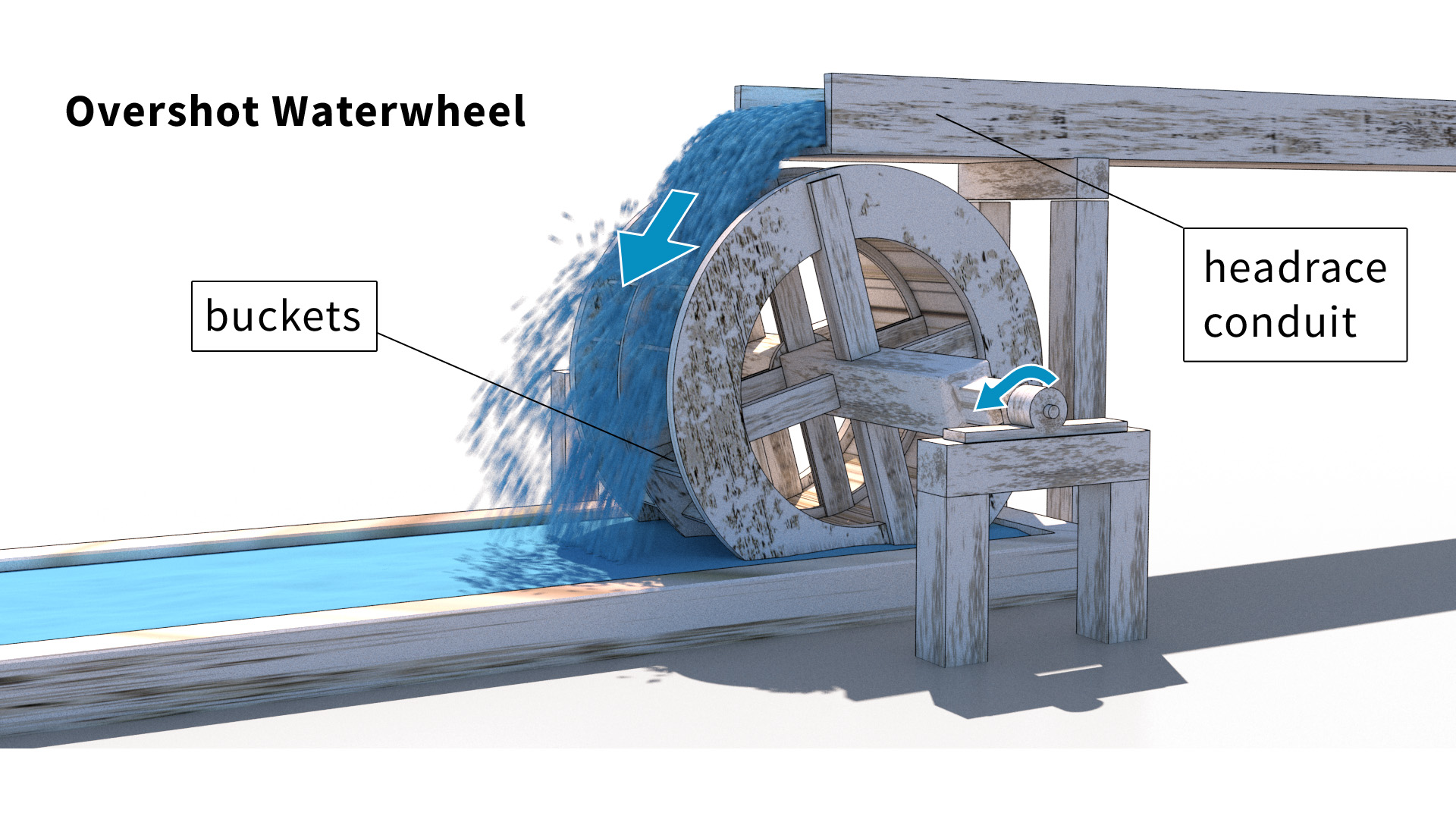Embankment construction measures
For near-natural development, the embankments of small watercourses, canals and ditches are often fortified with wood or stones. In the case of timber structures, this is usually done using living or dead wood construction methods. In the St. Albanteich, a number of shoring measures are in place. These are living groynes, interwoven fences and timber shoring. Additional stones for bank stabilisation have also been installed in some places.
The following are possible measures for stabilising riverbanks:




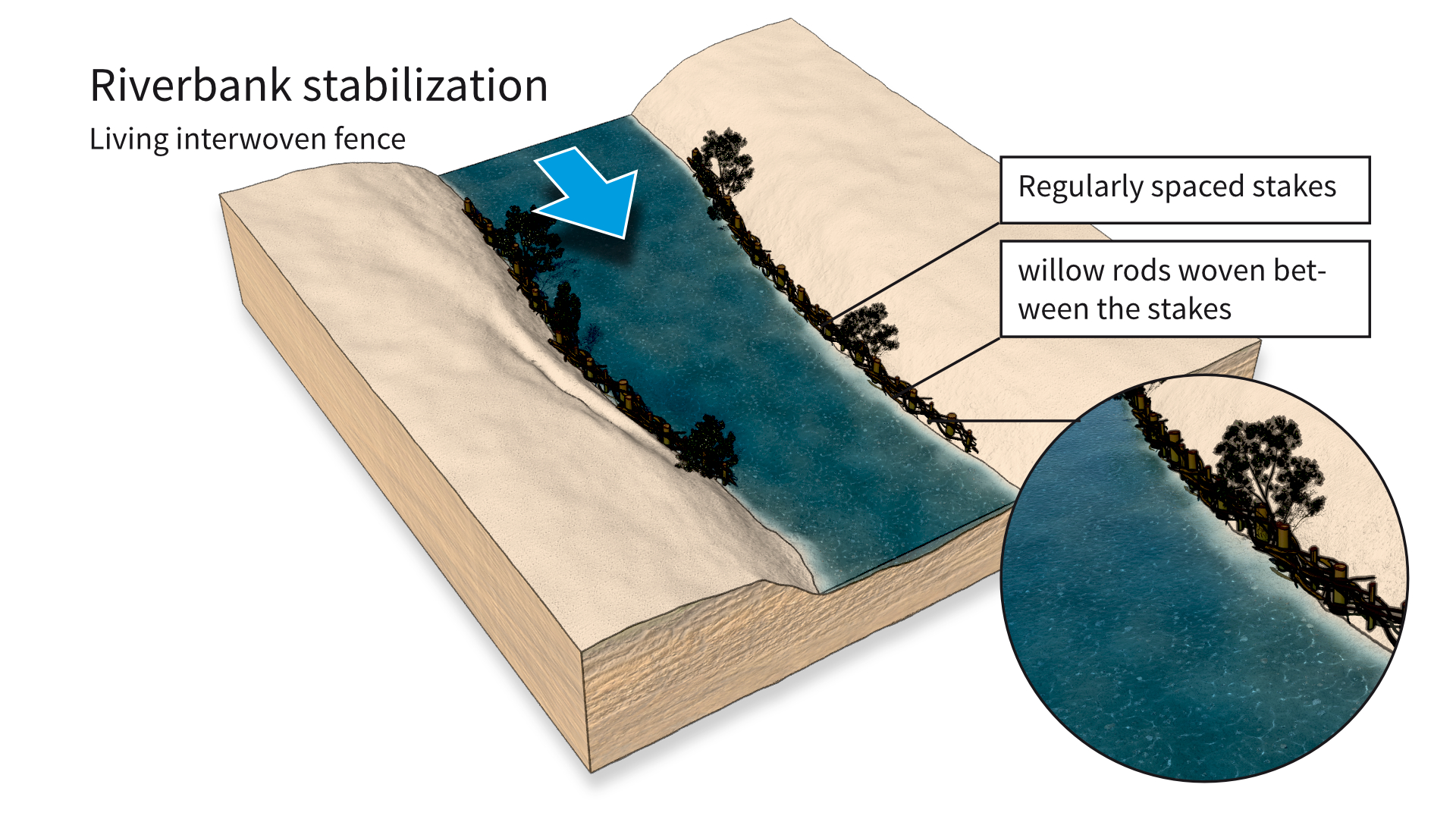

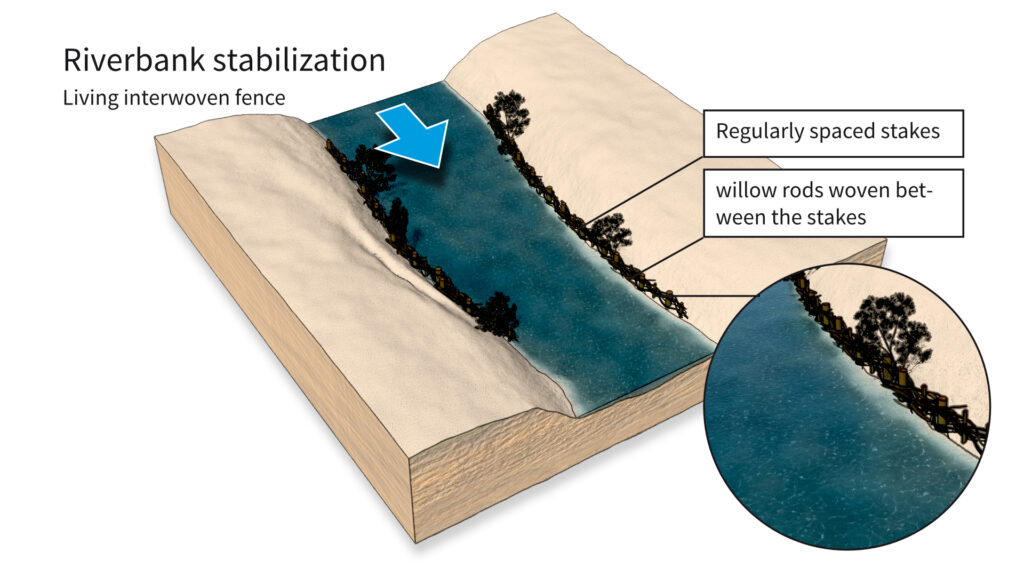
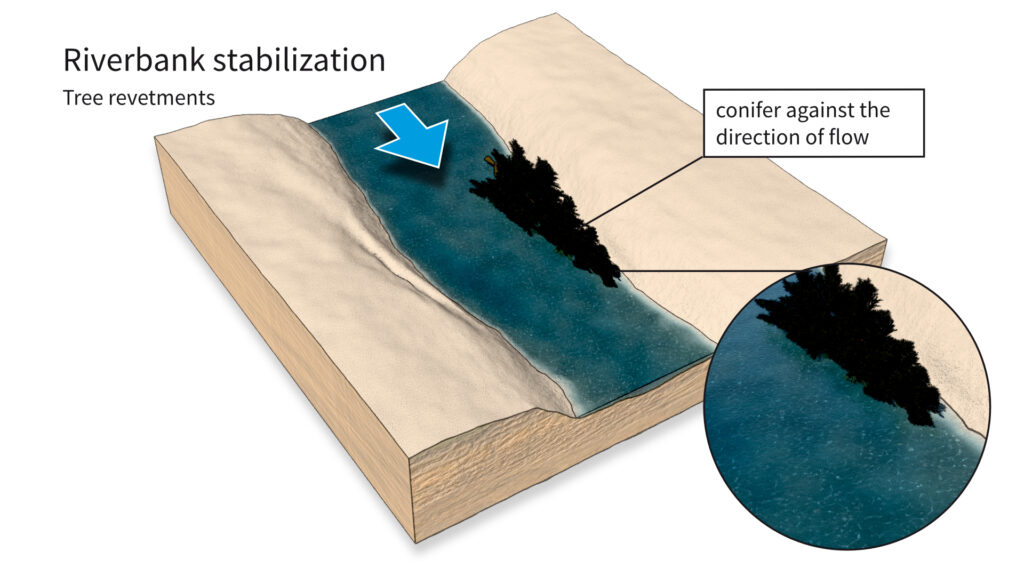 .
.